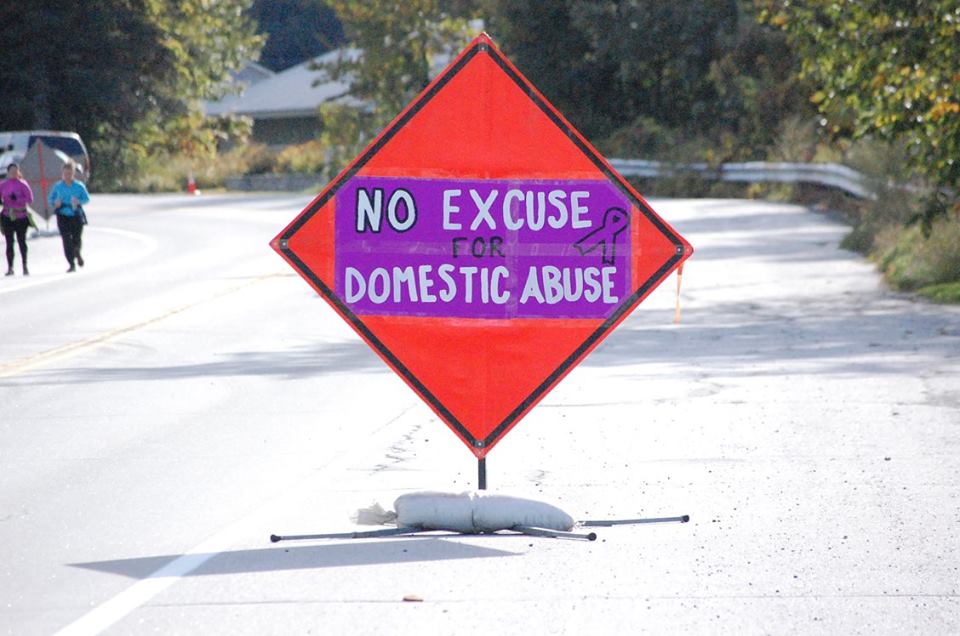Spruce Run-Womancare Alliance, along with many hundreds of organizations across the country, has just completed a month of coordinated activities for 2015’s Domestic Violence Awareness Month (DVAM). Significant staff and volunteer time, as well as resources, go into organizing our Bangor, Lincoln, and Guilford events each year. We also work hard to maintain a presence at the many community-led events across our two-county area. When it comes to describing our role in a quick soundbite, we say that October is about “creating awareness” around the issue of domestic violence.
During designated cause months like DVAM, simply acknowledging that an issue exists may seem like the most important goal. Wearing specific ribbons or clothing; posting a colored profile picture on Facebook; raising funds for a cause through a walk or run—these are all ways that people like to support causes they care about. But what happens to the issue of domestic violence after October, after most of our purple ribbons have been taken off, walks are complete, and Facebook posts turn to other topics? What are the tangible results of awareness activities?
The answer is that for domestic violence advocates, awareness is not a goal; it’s a threshold. You cannot educate the public about an issue they have never acknowledged or spoken about. Once upon a time not very long ago, domestic abuse was an exclusively private issue, with no public resources or organized supports available for victims and families. Fortunately, abuse is no longer widely accepted in society, allowing resources and support to flow to those who need it.
Yet, huge misconceptions about what causes abuse and what it looks like still prevail in mainstream society, and many, many abuses still happen behind closed doors. So a primary goal of our awareness efforts are to get people ready to hear what comes after the chants of “no excuse for abuse” have faded—to deepen their understanding about the causes and effects of abuse. With this deeper knowledge, people can recognize the warning signs in relationships, and know what do to help themselves or a friend.
Of course, there is more going on behind the banner of “awareness” than spreading knowledge. Events in October are a chance for communities to come together to mourn those who have been killed in domestic violence incidents (whether recent or from decades past). At each of our walks, staff members recognize family members of people killed in past tragedies. Events also create visibility to demonstrate that communities are allied with those who are being abused, not their abusers. That may give someone who is currently suffering from abuse the encouragement they need to seek help.
At the end of October, the most important way we can continue to fight abuse is by educating ourselves. If you have questions about what to say, or do, when someone you know is being abused, or if you’re wondering whether your own relationship is healthy, you can read more at the Spruce Run-Womancare Alliance website or on the Maine Coalition to End Domestic Violence page.
